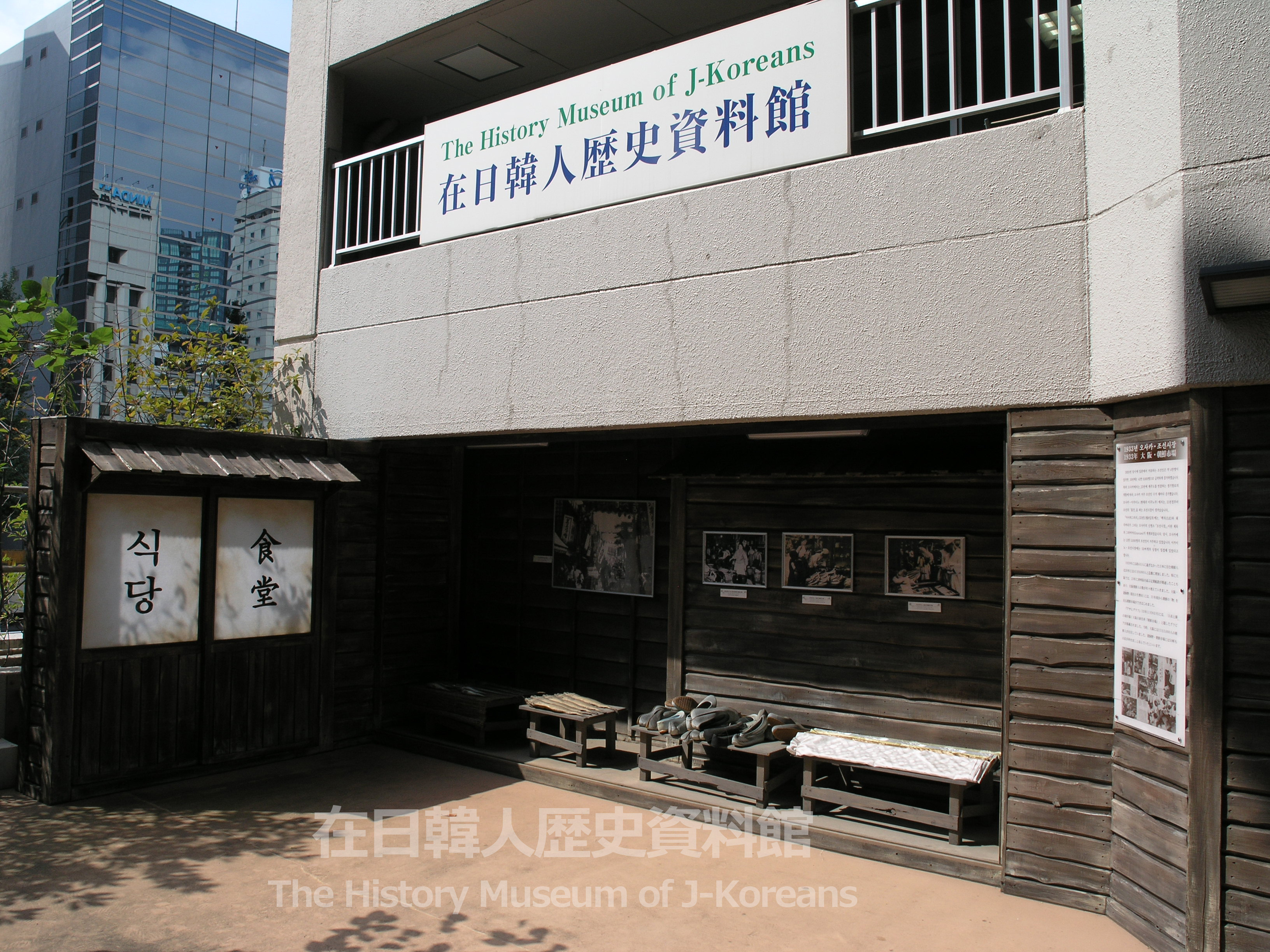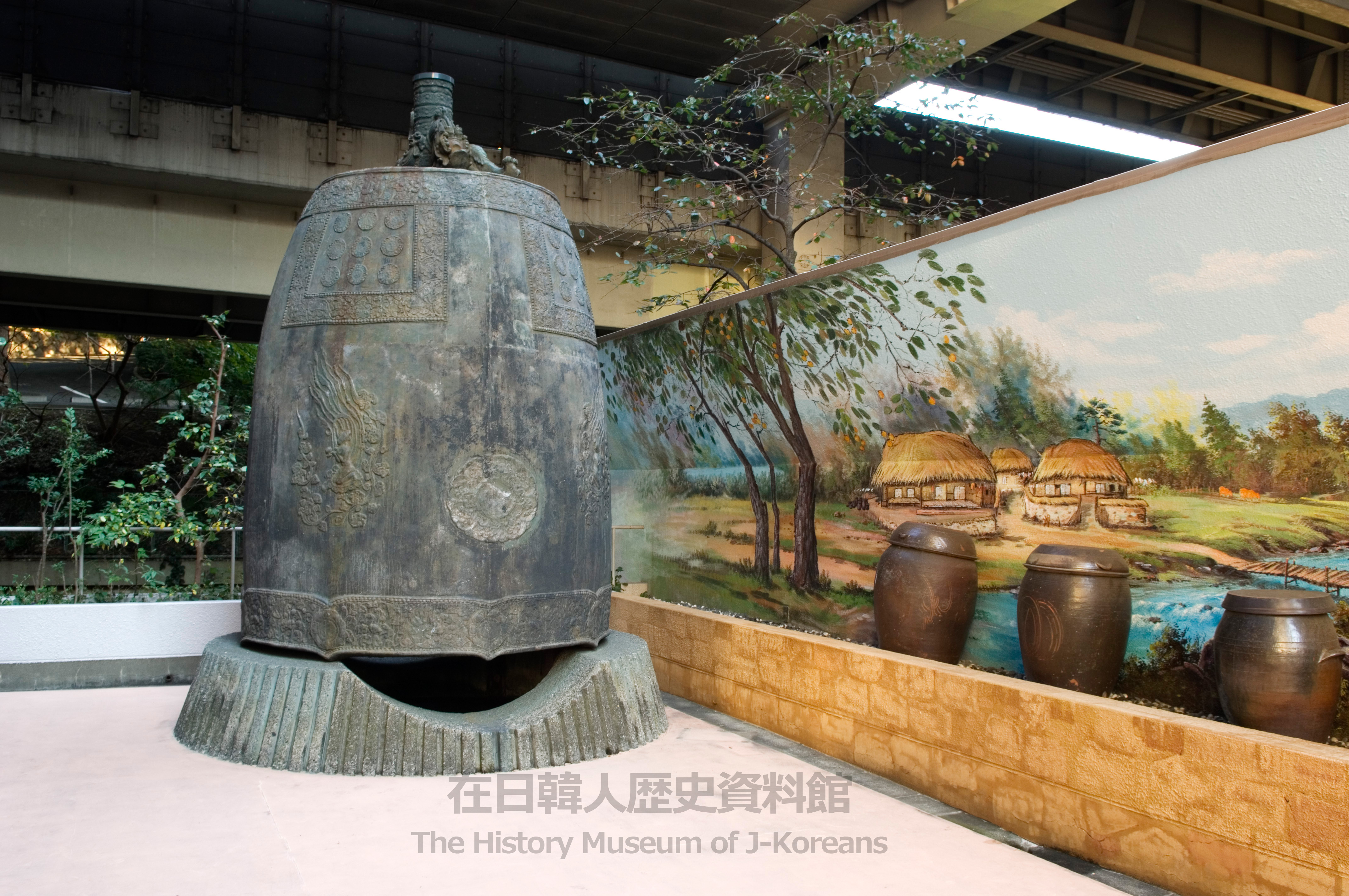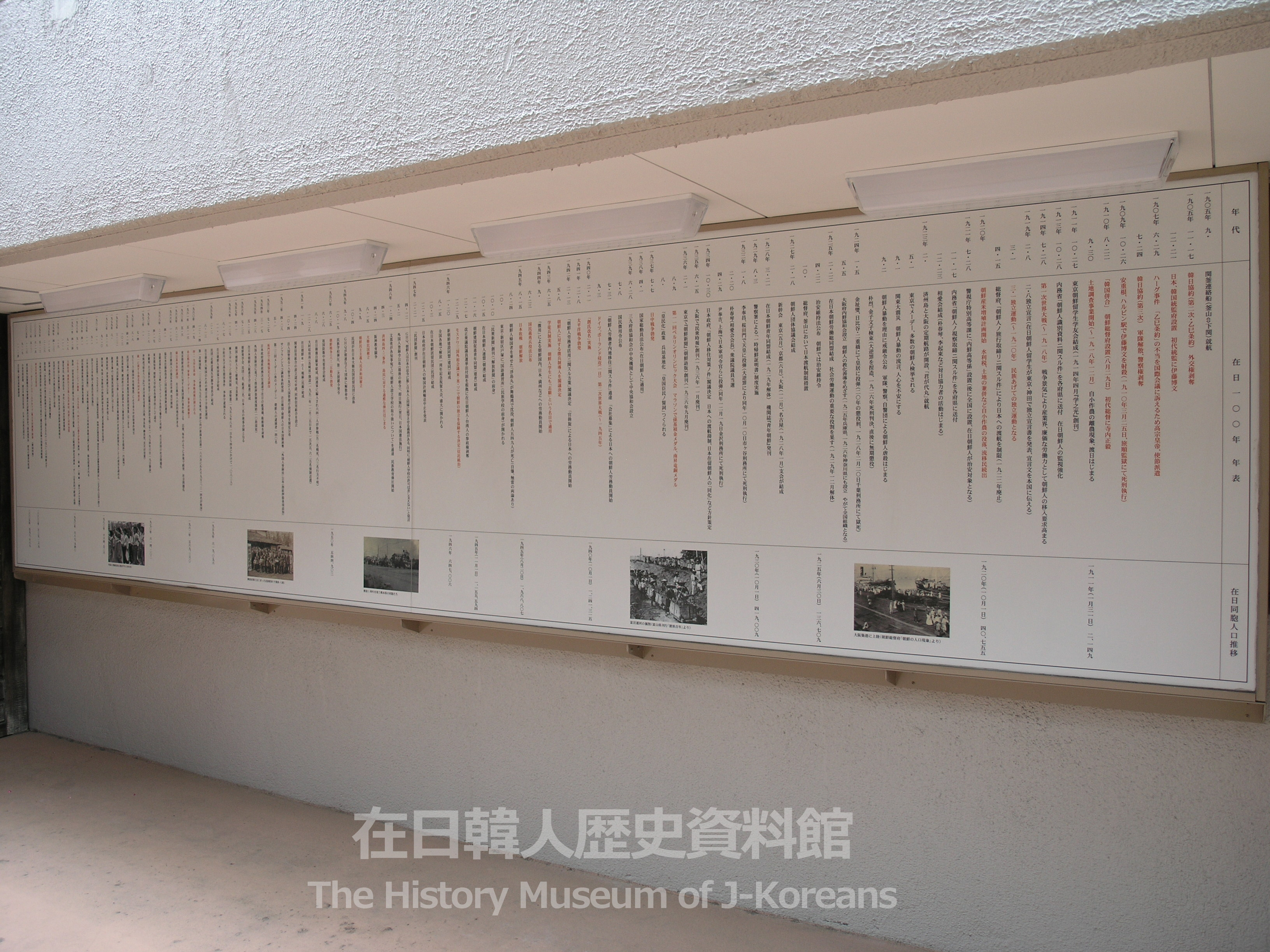Outdoor Terrace
Korean Market (Reproduction)
Starting from 1931, a “Korean market” selling goods from Korea emerged in Ikuno-ku, Osaka. At the time, Osaka was home to around 130,000 Koreans. There were more than 50 stores selling rubber shoes, cloth for chogori, chili, food, herbal medicines, and miscellaneous goods.

Hometown Landscape (Wall Painting)
The majority of first generation Zainichi Koreans were from farm villages in the southern part of Korea. Houses with straw-thatched roofs, a water wheel, farm equipment . . . this wall painting takes as its inspiration the farm villages of Kyongsang-Namdo.
The Emile Bell (Replica)
This is the largest extant Buddhist temple bell, made in 771 (Silla Dynasty). There is a legend that a young girl was sacrificed to create the bell, and that is why the bell sounds as if the girl is sadly crying for her mother (Emi). This bell was exhibited in the Korea Pavilion during the 1970 Osaka Expo.

Chronological Table of 100 Years of Zainichi History
This chronological table outlines the history of Zainichi Koreans, from the ferryboat service connecting Busan and Shimonoseki that began in September 1905, to the annexation of Korea in August 1910, to the name-change act (sōshi kaimei), to the defeat of Japan and liberation of Korea in August 1945, to the formation of ethnic organizations and ethnic education, to the promulgation of Alien Registration Act, to various anti-discrimination movements, and more.
